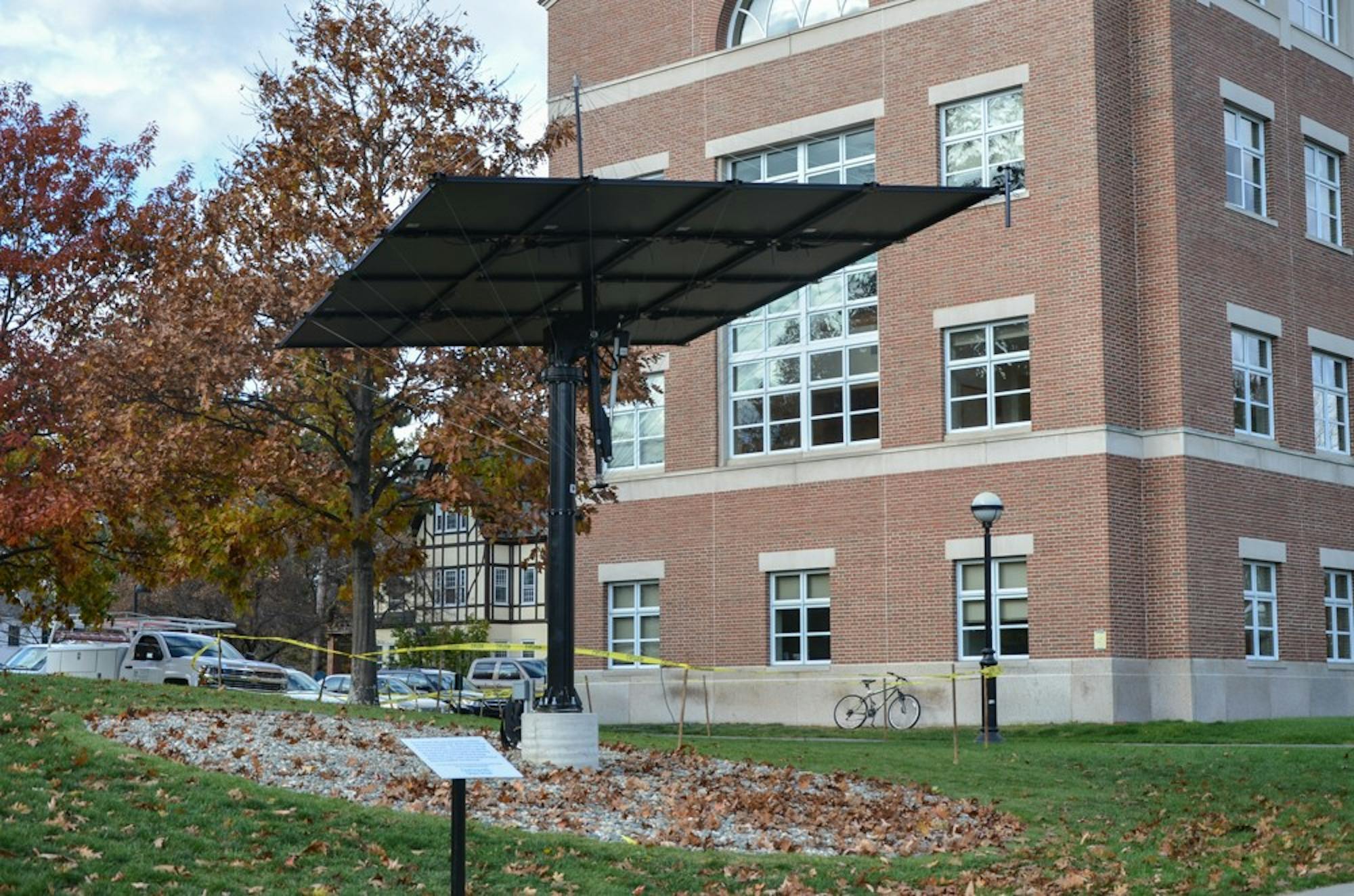Construction on a new photovoltaic panel adjacent to Moore Hall has just completed. This panel will serve as a model for the implementation of solar energy generation on campus, said Timothy McNamara ’78, associate director of real estate for the College.
Solaflect, a Vermont-based photovoltaic panel developer and manufacturer, built the newly-installed panel. The panel’s design allows it to track the sun both up and down and sideways. Furthermore, an anemometer on the structure will signal the panel to move into a vertical position in strong wind conditions, preventing possible damage. The panel’s design also allows it to shed snow easily. As a whole, the technology on this panel makes it 40 percent more efficient than a fixed photovoltaic panel, McNamara said.
“It’s a wonderful technology in that it allows us to offset consumption of fossil fuels and have zero emissions of greenhouse gas that you’re generating,” McNamara noted. “There’s just no emissions associated with it”
Other colleges have used similar technology to become more environmentally-friendly. Hampshire College in Amherst, Massachusetts recently installed photovoltaic panels in June. With the largest campus solar energy system in New England, Hampshire will be able to attain 100 percent of its electricity from the sun.
The new panel at the College will supply 4,300 watts of power to Moore Hall, generating enough electricity to power about three household hairdryers whenever the sun is out. The sustainability task force, created in April in order to further the College’s goal of reducing greenhouse gas emissions, spearheaded the construction of this panel beginning in May.
“I am troubled by the lack of options for running a campus like this without having environmental impacts,” said Andrew Friedland, environmental studies professor and a co-chair of the task force, noting that 80 percent of the College’s power comes from oil.
Friedland said that he hopes the panel will serve as a scaled-down model for the expansion of photovoltaic panels across campus.
The task force is scheduled to publish a report with recommendations in the spring. If the panel is sucessful, Friedland said that the report may recommend construction of more panels which would produce over a million watts of power.
Built without any federal or state subsidies at an estimated cost of about $20,000, this panel is the second photovoltaic panel on campus. The only other solar panel on campus was built on the roof of Murdough Hall over 20 years ago. This new panel will begin producing energy in coming days, and its performance can be tracked online on Solarflect’s website.
The panel, which is located in a highly trafficked pedestrian corridor, will serve as a reminder of Dartmouth’s goal to become more sustainable as well as carbon neutral, Friedland said. Friedland noted that the sustainability task force aims to have the College be not only carbon neutral, but even carbon negative within the next 20 to 40 years.




